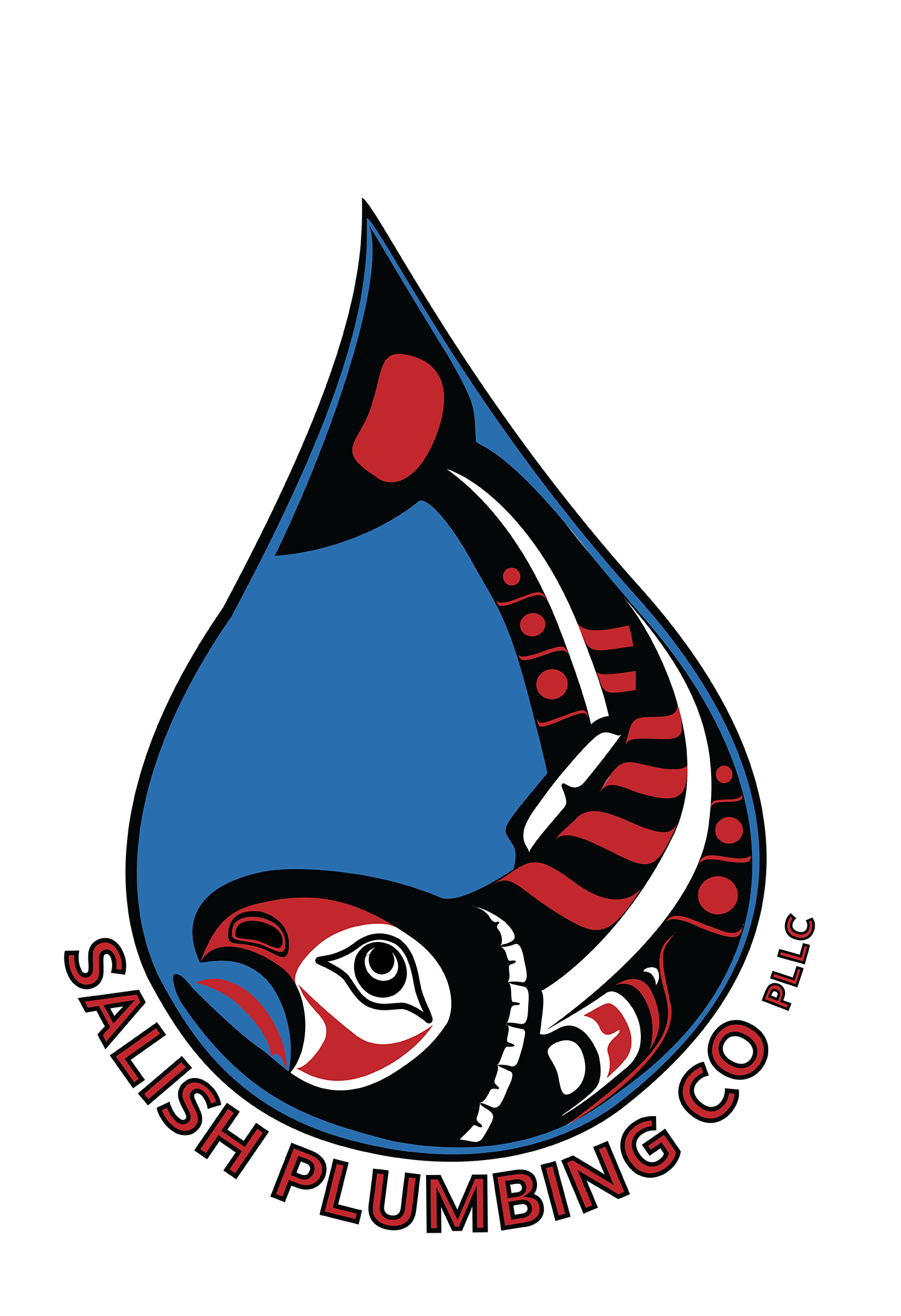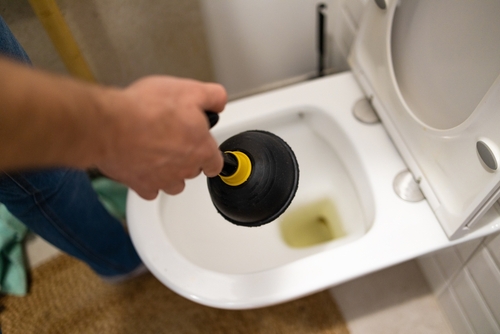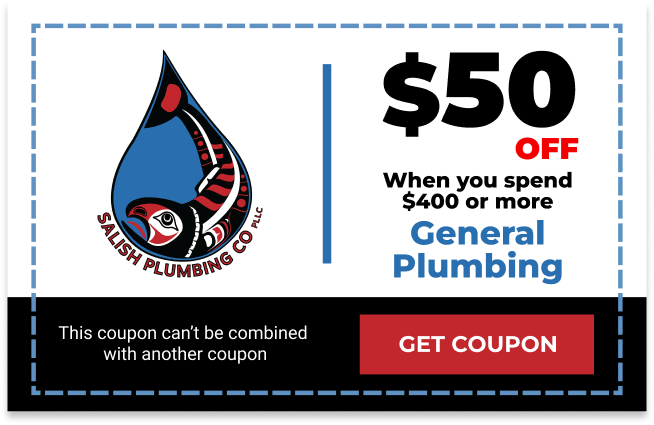Common Causes of Toilet Clogs
Are you tired of constantly dealing with a clogged toilet? It’s a frustrating and unsanitary problem that can disrupt your daily routine. But why does it keep happening? In this article, we will explore the common causes behind toilet clogs and provide effective solutions to fix them once and for all.
From flushing non-flushable items to insufficient water flow, there are several reasons why your toilet may keep clogging. Understanding these causes is key to preventing future blockages. We will discuss the impact of excessive toilet paper usage, the misuse of flushable wipes, and the dangers of flushing feminine hygiene products. Additionally, we’ll explore the consequences of a weak or inadequate flushing system and the importance of proper maintenance.
By the end of this article, you’ll have a clear understanding of the reasons behind your recurring toilet clogs and the steps you can take to avoid them. Say goodbye to frustrating blockages and enjoy a smoothly functioning toilet once again.
One of the most common causes of toilet clogs is the flushing of non-flushable items. This includes things like paper towels, baby wipes, cotton balls, and even certain types of feminine hygiene products. These items are not designed to break down in the same way as toilet paper, and they can quickly clog up the pipes, leading to a frustrating and potentially expensive problem.
Another common culprit is excessive toilet paper usage. While it’s important to use enough toilet paper to get the job done, using too much can lead to clogs. This is because toilet paper, while flushable, can still accumulate in the pipes and cause blockages over time. It’s important to use only the amount of toilet paper that you need and to be mindful of how much you’re flushing down the toilet.
Flushable wipes are another item that can cause toilet clogs. These wipes are marketed as being safe to flush, but in reality, they don’t break down as quickly as regular toilet paper. This can lead to clogs in the pipes, especially if multiple wipes are flushed at once. It’s important to read the label carefully and to avoid flushing these wipes if they’re not specifically designed to be flushed.
Understanding the Plumbing System
To understand why your toilet keeps clogging, it’s important to have a basic understanding of how the plumbing system works. The toilet is connected to a series of pipes that carry waste and water away from the home. These pipes can become clogged for a variety of reasons, leading to a backed-up toilet.
One of the main causes of toilet clogs is the accumulation of waste and debris in the pipes. Over time, this buildup can create a blockage that prevents water and waste from flowing freely. This can be exacerbated by the flushing of non-flushable items, as mentioned earlier.
Another factor that can contribute to toilet clogs is the design and condition of the plumbing system itself. Older homes may have pipes that are narrower or more prone to blockages, while newer homes may have better-designed systems that are less susceptible to clogs. Additionally, the overall condition of the pipes, including any cracks, leaks, or other damage, can also play a role in the frequency of toilet clogs.
Understanding the plumbing system can help you identify the root cause of your toilet clogs and take the appropriate steps to address the problem. By addressing the underlying issues, you can prevent future clogs and enjoy a smoothly functioning toilet.
It’s also important to note that the type of toilet you have can also impact the frequency of clogs. Some toilets are designed with more powerful flushing mechanisms, while others may be more prone to clogs. If you’ve tried all the basic troubleshooting steps and are still experiencing frequent clogs, it may be worth considering upgrading to a newer, more efficient toilet model.
Signs of a Clogged Toilet
One of the most obvious signs of a clogged toilet is when the water in the bowl doesn’t drain properly after flushing. Instead of quickly disappearing down the drain, the water may remain in the bowl or even start to rise. This is a clear indication that there is a blockage in the plumbing system.
Another sign of a clogged toilet is when the water in the bowl takes a long time to drain or doesn’t drain at all. This can be especially frustrating if you need to use the toilet urgently, as the blockage can prevent you from flushing and using the toilet effectively.
In some cases, a clogged toilet may also cause water to back up and overflow onto the floor. This can be a messy and unsanitary situation, and it’s important to address the problem as soon as possible to prevent further damage and potential health hazards.
It’s important to pay attention to these signs and address the problem as soon as possible. Ignoring a clogged toilet can lead to more serious issues, such as a complete blockage of the plumbing system or even damage to the toilet itself. By recognizing the signs of a clogged toilet and taking action, you can prevent these problems and maintain a smoothly functioning bathroom.
DIY Methods to Unclog a Toilet
When faced with a clogged toilet, there are several DIY methods you can try before calling a professional plumber. These methods can be effective in clearing minor blockages and restoring your toilet’s functionality.
One of the most common DIY tools for unclogging a toilet is a plunger. A plunger is a simple yet effective tool that can be used to dislodge and clear a clog. To use a plunger effectively, start by ensuring that the plunger is the right size for your toilet. Then, firmly place the plunger over the toilet’s drain opening and give it a few firm, up-and-down pumps. This can help create suction and dislodge the blockage.
If a plunger doesn’t do the trick, you can try using a toilet auger, also known as a plumber’s snake. This tool is designed to reach deeper into the toilet’s pipes and break up more stubborn clogs. To use a toilet auger, insert the end of the auger into the toilet’s drain opening and crank the handle to extend the auger’s cable. Gently push the auger into the drain until you feel the blockage, then crank the handle in reverse to pull the auger back out, along with the clogged material.
Another DIY method for unclogging a toilet is to use a baking soda and vinegar solution. Simply pour a cup of baking soda into the toilet bowl, followed by a cup of white vinegar. Allow the mixture to sit for a few minutes, then flush the toilet. The chemical reaction between the baking soda and vinegar can help break down the clogged material and clear the blockage.
If none of these DIY methods are successful, it may be time to call in a professional plumber. Plumbers have access to more powerful tools and equipment, as well as the expertise to identify and address more complex plumbing issues. Don’t hesitate to seek professional help if your DIY efforts are not resolving the problem.
Using a Plunger Effectively
One of the most common and effective DIY tools for unclogging a toilet is a plunger. However, using a plunger correctly is crucial for successfully clearing a blockage.
First, make sure you have the right type of plunger. There are two main types: a standard cup plunger and a flange plunger. The flange plunger is designed specifically for toilets, as it has a rubber flange that creates a better seal around the toilet’s drain opening. This helps to create more suction and pressure to dislodge the clog.
When using a plunger, start by ensuring that the water level in the toilet bowl is at least a few inches high. If the water level is too low, the plunger won’t be able to create enough suction. Firmly place the plunger over the drain opening, making sure to create a tight seal. Then, slowly and firmly push the plunger down to force air into the pipe, followed by a quick, forceful pull upwards to create suction.
Repeat this process several times, varying the speed and force of your plunges. If the first few attempts don’t work, try adding a bit of water to the bowl to increase the suction. You may also need to use a bit of elbow grease and really put your weight behind the plunging motion to dislodge a stubborn clog.
If the plunger isn’t effectively clearing the clog, you can try using a toilet auger or snake to reach deeper into the pipes. However, it’s important to start with the plunger first, as it’s a less invasive and potentially damaging method.
Remember, using a plunger correctly takes some practice, but it can be a highly effective way to clear a clogged toilet without calling in a professional. With patience and the right technique, you can often resolve the issue yourself.
Using a Toilet Auger to Clear Stubborn Clogs
If a plunger isn’t doing the trick, it may be time to bring out the big guns: the toilet auger, also known as a plumber’s snake. This tool is designed to reach deeper into the toilet’s pipes and break up more stubborn clogs that a plunger can’t handle.
To use a toilet auger, start by inserting the end of the auger into the toilet’s drain opening. Crank the handle to extend the auger’s cable, gently pushing it into the drain. You’ll feel when the auger hits the blockage, as the cable will start to encounter resistance.
Once you’ve located the clog, continue cranking the handle to extend the auger further into the pipe. This will help break up the blockage and clear the way for the water to flow freely again. Be gentle and patient, as you don’t want to damage the pipes or the toilet itself.
If the auger doesn’t seem to be making progress, you can try a few additional techniques. First, try rotating the auger in both directions, clockwise and counterclockwise, to help dislodge the clog. You can also try pulling the auger back out a bit and then pushing it back in, creating a back-and-forth motion to break up the blockage.
If the clog is particularly stubborn, you may need to use a more powerful auger or even call in a professional plumber. Plumbers have access to more heavy-duty equipment and the expertise to handle even the most difficult clogs.
Remember, using a toilet auger can be a bit more challenging than a plunger, so take your time and be careful. If you’re not comfortable using the auger, it’s better to call in a professional than risk damaging your plumbing system.
Preventive Measures to Avoid Toilet Clogs
While dealing with a clogged toilet can be a frustrating experience, there are several preventive measures you can take to avoid these issues in the first place. By being mindful of what you flush and maintaining your plumbing system, you can help keep your toilet running smoothly for years to come.
One of the most important preventive measures is to be mindful of what you flush down the toilet. As we’ve discussed, flushing non-flushable items like wipes, paper towels, and feminine hygiene products can lead to clogs. Make sure to dispose of these items in the trash instead of flushing them down the toilet.
Another key preventive measure is to use toilet paper responsibly. While it’s important to use enough toilet paper to get the job done, using excessive amounts can lead to clogs. Try to use only the amount of toilet paper you need, and be mindful of how much you’re flushing.
Regular maintenance of your plumbing system can also help prevent toilet clogs. This includes having your pipes professionally cleaned and inspected on a regular basis, as well as addressing any leaks or other issues that may arise. By keeping your plumbing system in good working order, you can help reduce the likelihood of clogs and other plumbing problems.
If you have an older home with an outdated plumbing system, you may want to consider upgrading to a newer, more efficient toilet model. Newer toilets are often designed with more powerful flushing mechanisms and larger pipes, which can help reduce the risk of clogs.
By implementing these preventive measures, you can help keep your toilet running smoothly and avoid the frustration of dealing with frequent clogs. Remember, it’s always better to take proactive steps to prevent problems rather than having to deal with them after the fact.
Common Mistakes that Lead to Toilet Clogs
While we’ve discussed the common causes of toilet clogs, it’s also important to be aware of the common mistakes that can contribute to these issues. By avoiding these mistakes, you can help keep your toilet functioning properly and reduce the frequency of clogs.
One of the most common mistakes is flushing non-flushable items down the toilet. As we’ve mentioned, items like paper towels, wipes, and feminine hygiene products can quickly clog up your plumbing system. It’s important to always check the packaging and only flush items that are specifically labeled as “flushable.”
Another mistake is using excessive amounts of toilet paper. While it’s important to use enough to get the job done, using too much can lead to clogs. Try to use only the amount of toilet paper you need, and be mindful of how much you’re flushing.
Ignoring signs of a clogged toilet is another common mistake. If you notice that your toilet is draining slowly or not flushing properly, it’s important to address the issue right away. Ignoring these signs can lead to more serious clogs and potential damage to your plumbing system.
Finally, trying to use chemical drain cleaners to clear a clog can sometimes do more harm than good. These harsh chemicals can actually damage your pipes and plumbing fixtures, making the problem even worse. Instead, try using more gentle, DIY methods like a plunger or toilet auger before resorting to chemical solutions.
By avoiding these common mistakes, you can help keep your toilet functioning properly and reduce the frequency of clogs. Remember, prevention is key when it comes to maintaining a smooth-running plumbing system.
When to Call a Professional Plumber
While there are many DIY methods for unclogging a toilet, there are some situations where it’s best to call in a professional plumber. Knowing when to seek professional help can save you time, money, and potential damage to your plumbing system.
If you’ve tried using a plunger and a toilet auger, but the clog persists, it may be time to call a plumber. Persistent clogs can be a sign of a more serious issue, such as a blockage deeper in the plumbing system or a problem with the toilet itself. A professional plumber has the expertise and specialized tools to properly diagnose and address these types of problems.
Another situation where you should consider calling a plumber is if you suspect a more complex plumbing issue, such as a broken or damaged pipe. While a clogged toilet may be the immediate problem, it could be indicative of a larger issue within your home’s plumbing system. A professional plumber can assess the entire system and recommend the appropriate repairs or replacements.
If you’re dealing with a toilet that keeps clogging, it’s also a good idea to call a plumber if the clogs are accompanied by other plumbing problems, such as slow drains or water backups. These issues could be signs of a more widespread problem that requires professional attention.
Finally, if you’re not comfortable using a toilet auger or other specialized tools, it’s best to call in a professional. Attempting to clear a clog with improper techniques or equipment can lead to further damage to your plumbing system, which can be costly to repair.
Remember, while DIY methods can be effective for minor clogs, it’s important to know when to call in a professional plumber. Trying to tackle complex or persistent plumbing issues on your own can often lead to more problems down the line.
Maintaining a Clog-Free Toilet
In conclusion, dealing with a clogged toilet can be a frustrating and disruptive experience, but it’s a problem that can be effectively addressed and prevented. By understanding the common causes of toilet clogs, such as flushing non-flushable items, using excessive toilet paper, and having an inadequate plumbing system, you can take proactive steps to maintain a smooth-running toilet.
Implementing preventive measures, such as being mindful of what you flush, using toilet paper responsibly, and regularly maintaining your plumbing system, can go a long way in avoiding future clogs. Additionally, knowing when to use DIY methods like a plunger or toilet auger, and when to call in a professional plumber, can help you address clogs quickly and effectively.
Remember, a well-functioning toilet is essential for maintaining a clean and comfortable living environment. By taking the time to understand the causes of toilet clogs and implementing the right solutions, you can enjoy a clog-free toilet and a hassle-free bathroom experience. So, say goodbye to frustrating blockages and hello to a smoothly operating toilet that serves you well for years to come.
Call Your Toilet Repair Experts In Shoreline WA
For those living in Shoreline, WA and the surrounding areas, Salish Plumbing Co, PLLC, is here to help with all your toilet repair and plumbing problems. As a trusted local company, Salish Plumbing Co offers expert solutions for clogged toilets, ensuring your bathroom stays functional and hassle-free. Whether you’re dealing with recurring clogs, slow draining, or other toilet issues, our team is equipped with the latest tools and techniques to provide efficient and lasting repairs. With a commitment to honesty and customer satisfaction, Salish Plumbing Co, PLLC, is your go-to source for reliable plumbing services in Shoreline and the surrounding areas.














